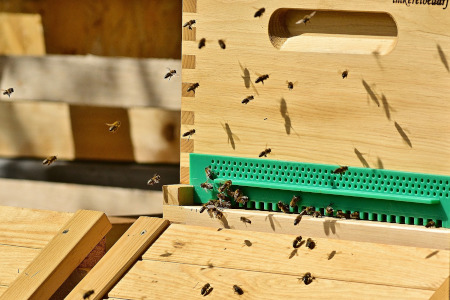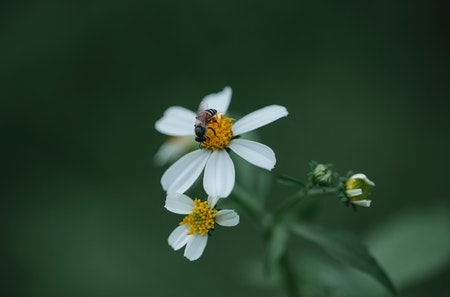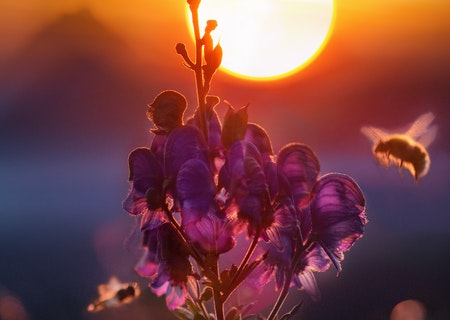Important Tasks During Main Grazing
Preparation for Grazing
Whenever possible, bee colonies should be located as close as possible to the pasture. This means moving them from one place to another where the same or some other pasture is just beginning. If the pasture is closer, the bees use it more efficiently. In that case, they fly less and when they are filled with nectar and pollen powder, they become far less tired. Otherwise, bees move away from the hive at different distances, which primarily depends on weather conditions and the distance of grazing. In bad weather, bees do not fly far. If the weather is nice and the hive is close to the pasture, the bees still do not fly far. However, if the pasture is far away and the weather is light, the bees can move up to five kilometers away from the apiary, sometimes even further.

In 1953, Jovan Momirovski moved his bees from Tetovo to a chestnut pasture in the village of Lesak, seven kilometers away on a topographic map. The next day, he found that a number of worker bees had returned to the old apiary in Tetovo. The bees flew exactly to the places where their hives were, and then, after some time, flew into other nearby hives, which were not moved away because they were. The effects of beetle work are far greater when grazing is closer and the flight is shorter. The distance of two to three kilometers will be covered in 20 to 25 minutes or five times later, and flights at a distance of five to ten kilometers can last from one to three hours. These data clearly indicate how much honey yield depends on the distance of the bee pasture from the apiary.
We will understand how important the proximity of the pasture is if we get acquainted with the facts from the life of bees. In order for a bee to produce 100 grams of honey, it must visit about a million flowers. To produce about a kilogram of honey, the worker bee needs to bring about 140,000 loads of nectar to the flowers. To produce about a kilogram of honey, worker bees need to fly about 400,000 kilometers, assuming that the pasture is on average 1.5 kilometers away from the apiary.
However, many beekeepers do not have the ability to migrate bees. With a lot of knowledge and attention, you can do beekeeping without moving. Those who move bee colonies, on the other hand, must strictly adhere to all regulations on the migration of bees, about which the best information is obtained from the veterinary inspection and the beekeeping society in the municipality.
When extremely strong bee societies have already been created and the basic characteristics of the main pastures are known, the most important tasks before and during the main pasture are as follows:
1. Prevent the urge to swarm and create a working mood in the worker bees to collect nectar and process it into honey.
2. Maintain a strong society without the urge to swarm, and keep the worker bees in the mood to collect nectar and produce honey. However, these two jobs can be equally important because an extremely strong bee society is useless if the urge to swarm appears before or during the main grazing. If the bee colonies swarm at that time, they will hardly produce as much honey as the swarm needs and the basic society that swarmed.

To keep the bee colony strong and in a constant working mood, the following measures need to be taken:
- If the bee colony is highly developed before the main grazing, and there is a danger of the urge to swarm, one or at most two frames with a mature closed brood can be taken from that colony to strengthen another colony. These frames should be framed with a young, properly-built honeycomb. If it is not available, a frame with a built-in wax base can be used. This will significantly reduce the possibility of the urge to swarm.
- Expand the space in the hive slightly and sufficiently. This is the most significant measure at this time to achieve the desired goal.
How Strong Bee Colonies Can Achieve High Production of Honey
It is often emphasized that only very strong bee colonies can achieve high honey production. However, the actual height of honey yield mostly depends on how the main pasture is utilized, even in extremely strong colonies. Usually, the main grazing is short-lived, but under normal conditions, it produces intense honey flow, resulting in large amounts of nectar. Black locust pasture is a clear example of this phenomenon.
During the peak of honey production from black locust, when there is an abundance of it and the climatic conditions are favorable, a single, healthy bee colony can collect up to 10 to 15 kilograms of nectar per day. Even with only 4 to 5 days like this per year, coupled with average pasture conditions, high honey production can still be attained. However, when another main pasture like sunflower is used, a colony's strength becomes more critical. Normally, sunflower can yield from 20 to 30 kilograms of honey per hive, but only strong bee colonies can achieve high honey production under normal climatic conditions. To achieve this, the bee colonies must become extremely strong 4 to 5 days before the main grazing and be motivated to collect nectar and turn it into honey during the main grazing.

To achieve high honey production, it is necessary for all frames in the brood chamber to be filled with brood, honey, and pollen powder before the first main grazing. This requires making good use of early spring pastures like oilseed rape and fruit trees. During early spring pastures, bee colonies tend to develop, create honeycombs from wax bases, and fill the brood with honey and pollen powder. This allows the bees to immediately collect nectar and store it in honeycomb as soon as the main grazing begins. Honey production is less efficient when bees first fill up the brood box with honey at the beginning of the main grazing before moving on to honeycomb collection. If there is not enough bee pasture during the earlier period, the colonies can be fed with sugar syrup as necessary to develop, create honeycombs, and fill up all free space in the brood box with honey.
In all parts of south east Europe, where the first main grazing of black locust occurs, there is usually a grazing period between the fruit and black locust grazings. This can have a detrimental effect on honey production later on, as the bee colonies are generally very strong during this period, with a lot of brood to be fed and nurtured. As a result, large amounts of honey and pollen are consumed from the reserve, and the queen lays significantly fewer eggs, sometimes even stopping altogether. The fewer eggs the queen lays during this period, the greater the disturbance to the age structure of the worker bees, resulting in fewer young worker bees later on. This, in turn, can reduce honey production when the main pasture arrives. Therefore, if there is a grazing period between fruit and black locust pastures, or if there is very little grazing, bee colonies should be fed sugar syrup. However, care should be taken to ensure that the intake of nectar, pollen powder, and added syrup does not exceed a maximum of about 600 to 700 grams per day. This is the second measure to take before the main pasture.
arrow_upward